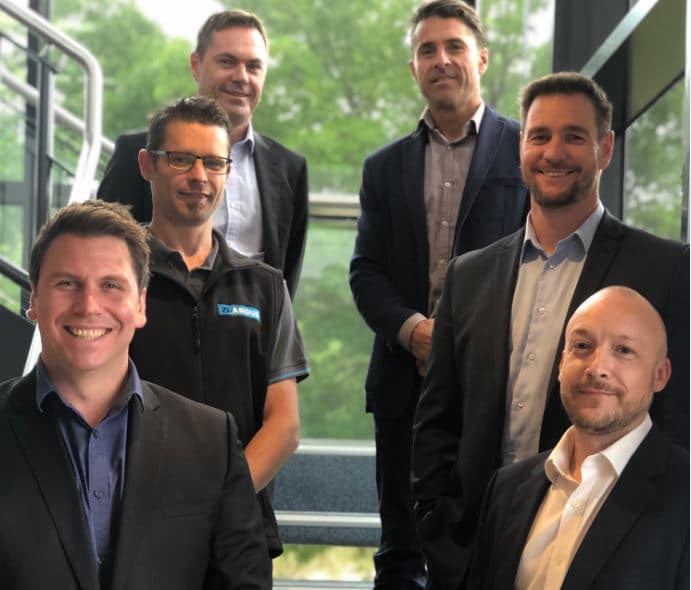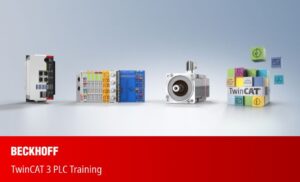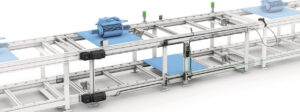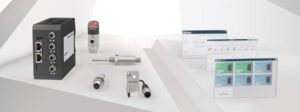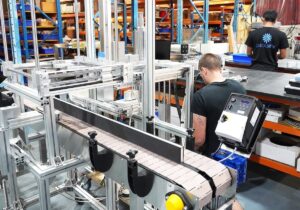Investing in Industry 4.0 and the Industrial Internet of Things (IIoT) is becoming a much more important prospect for manufacturers seeking to better integrate and automate their processes. Cutting through the hype and jargon is tricky, however, and there can be a disconnect between big ideas and putting those ideas into action – one that a new industry collaboration is looking to erase.
To help make Industry 4.0 and IIoT technology more accessible, Nord, SMC Pneumatics, Beckhoff Automation, Balluff, and ZI-Argus, are joining forces to form a new open-source knowledge group dubbed Open IIoT, which aims to simplify the complex topics for clients.
According to Martin Broglia, managing director of Nord Drivesystems, enthusiasm for Industry 4.0 among manufacturers is not matched with expertise.
“Industry 4.0 is causing much interest with manufacturers, and they do want to and actually have to adopt this technology – but there seems to be a disconnect on how to get there and what the real benefits in investing in Industry 4.0 technologies would be,” said Broglia.
“Many suppliers can provide their own technology, each with many benefits and advantages. The challenge manufacturers face is how to integrate all this technology and capture all the data into their existing systems,” he said. “This leaves highly complex technologies to be integrated either by in-house resources or external contractors, which may be seen as too risky a project to take on.”
Another issue, as noted by Broglia, is the economic pressure placed on manufacturers when purchasing OEM equipment; this causes OEMs to avoid offering machinery with advanced technologies that will make them less competitive.
“Therefore, I notice a disconnect between manufacturers’ plans and their actions despite the fact that they all understand its strategic importance,” said Broglia. “It is this topic of disconnect that we must address in order to improve productivity.”
The Open IIoT group plans to work with the government and industry, including relevant associations like APPMA, to help Australian manufacturers catch up to their counterparts from around the world. It will offer a “how to implement” guide with a focus on the practice, rather than the theory.
“Rather than tip-toeing around the subject, we make use of industry experts to address the crucial topics of ‘real business value’, security, data ownership and IT integration,” the group says. “IIoT is discussed on the factory floor, but we see very little input and collaboration with the IT departments which play a crucial role in its implementation.”
According to Jozef Ceh, digital transformation leader at SMC, one key barrier to implementation of IIoT lies in the ability of manufacturers to connect tangible value to the investment – a barrier Open IIoT hopes to overcome.
“Even though the technology continues to evolve at a rapid rate, proving its significance in commercial applications, the conversation seems to be focused mostly around ‘how does this technology relate to our manufacturing process and what would be the benefits’,” said Ceh.
“Generally this seems to be accompanied by the perception that ‘smart manufacturing’ is just more automation. The key to successful implementations of smart manufacturing technology starts with a new mindset which is driven by clearly defined outcomes.”
IIoT equipment makers need to pay attention to end-user demands, says Nick Psahoulias, industrial computing specialist at Beckhoff Automation. “Customers are looking for interoperability between machines and transparency of information – from a sensor level, right across all machines in the network. The information needs to be useful and available to operators and management,” he said.
According to Psahoulias, equipment manufacturers can realise new business models by integrating their machines with public or private cloud services.
“The features needed for simple IIoT integration are a cloud connection based on open standard protocols, with one engineering platform and an IIoT Edge device – which can also be retrofitted to older machines.
“With easy data storage and analysis using useful algorithms, individualised dashboards can be created. The benefits experienced by the manufacturer are lower production costs, optimised product quality, transparency in predictive maintenance resulting in reduced machine downtime,” he said.
Source: Auspack

